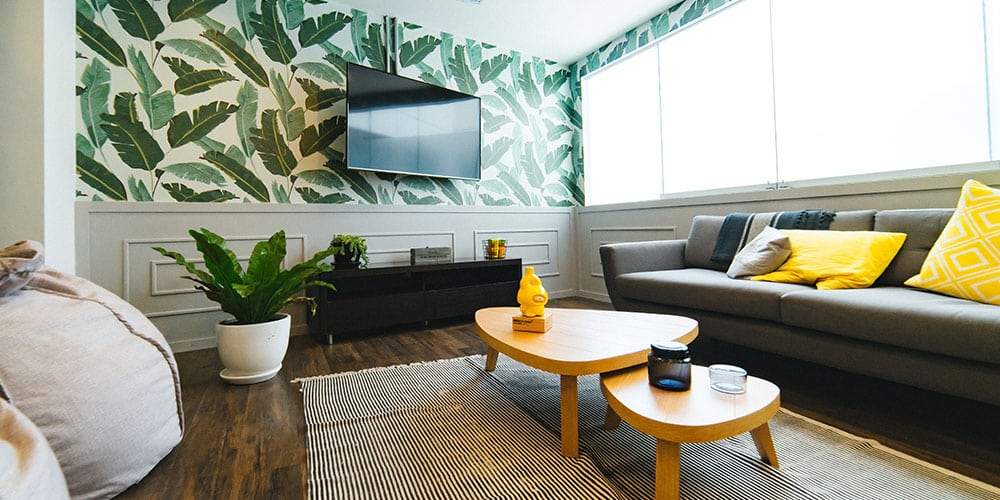
The origins and history of interior design
With the field of interior design more than a hundred years old, we will now take a look at the roots of design history and the designers who made a name for themselves when the industry began to advance in the early 20th century. Animaster College of Animation and Design has always come up with informative blogs that can help students learn more about their field of education. We realize that design education is vast and learning and understanding it is a never-ending process. Here’s everything you need to know, all the way from the ancient Egyptians, to the dawn of modern interior design.
This might sound a little rudimentary, but let’s start with the basics of interior design services. Interior design is defined as the art and science of improving the design of interior space to create an environment that is more refined and aesthetically pleasing. An interior designer is someone who is trained to implement plans, research, coordinate, and manage decorative design projects responsibly. The field of interior design is diverse and includes space planning, concept development, site inspection, programming, research, client communication, project and construction management, and implementation of the required design.
Before this field became increasingly popular, interior design instinctively appeared to strictly coordinate only with the architectural form of buildings. The interior design emerged with the rise of middle-class society and the complex architectural designs that became popular during the Industrial Revolution. The endeavor to optimize utilization of space with concern for user welfare and functional design continues to drive development potential and life improvement possibilities to repeat today in the interior design profession. BVA Degree in Interior and Spatial Design is one such degree for a budding interior designer to excel in this career. However, the interior design profession is markedly separate from the work of an interior designer, a title widely used throughout the United States. The term interior designer is considered less common in the United Kingdom where the profession of interior design is still unregulated and unfortunately not considered a formal profession to this day.
Early in ancient India, architects also worked as interior designers to develop their vision. This can be seen in one of the references of the architect Vishwakarma – one of the gods of Indian mythology. These references show carvings with ancient texts and events seen in palaces that were built in India in the 17th century.
In ancient Egypt, the “house of the soul” or examples of houses was presented in tombs as containers such as serving food. Through these interesting ornaments, the interior design of various dwellings in many Egyptian obelisks can be deciphered, including modernization of the ventilation, arcades, columns, balconies, windows, and doors.
During the 17th, 18th, and first part of the 19th century, interior decoration was the concern of a housewife, an upholsterer, or a skilled craftsman who could securely advise based on his artistic outlook on the interior design of a home. In some cases, architects also had occasional use of craftsmen and technicians to design buildings internally for themselves.
The practice of interior design goes back to the ancient Egyptians, who designed their mud-brick homes with the main furniture from animal skins, simple textures, and murals documenting biographies, spiritual etiquette, sculptures, and colorful jars. Decorations in Egyptian tombs (such as King Tutankhamun’s tomb) and ornaments indicate the need for uniquely rich decorations to symbolize the more powerful and wealthy Egyptians.
The Roman and Greek civilizations developed the Egyptian art of interior design and decorating by celebrating civic pride through their invention of public buildings with domed roofs. For their homes, elaborate Greek wooden furniture featured intricate ivory and silver motifs while the Romans focused on marrying beauty and comfort, with the interiors of homes from both civilizations reflecting the wealth and socio-political status. Roman furniture was usually made of stone, marble, wood, or bronze and was made comfortable with expressive cushions and textures. In order to elevate their homes, the Romans and Greeks both brought vases and created mesmerizing mosaic floors, wall drawings, and frescoes to make the spaces unique to them.
After this era of design decoration, there was a sudden trend towards accuracy, as a result of the dark wars that were raging throughout Europe in the Middle Ages and rise of the Christian church. The Dark Ages were crafted for a good reason, the interior design history of the era has featured dull wood panels, only simple and functional furnishings, and stone floors. Even the wealthiest patrons of the era adhered to muted, realistic colors when adding decorative accents such as tapestries and stones.
After the dark ages, Europeans were once again inspired to introduce color and decoration into their homes. During the twelfth century, the Romanesque-Gothic order was created to make the most of the natural light and common, newly opened interior views.
During the 15th and 16th centuries, the French Renaissance began with a renewed focus on art and creativity in interior design. Architects of this era began creating homes with essential decorative notes, including marble floors, ornate woodwork, paintings, and furniture made from the finest materials. A quick glance at the eras of royal palaces, villas, and temples will highlight the best of Renaissance interiors.
After the Renaissance, intricate Italian Baroque designs dominated Europe. For example, the Palace of Versailles in France shows notable use of elements of the Italian Baroque in interior design such as colored marble and stone, stained glass, ornate ceilings, and spiral columns. By the 18th century, European interior architects increasingly popularized the Rococo system when they were influenced by Asian porcelain, floral prints, and furniture inlaid with exotic details such as ivory and mother-of-pearl. Then came the late 18th-century neoclassical look, a distant look at the famous design elements found in ancient Rome, the use of subtly colored silk, satin, and velvet.
From the beginning of the 19th century, there was usually more freedom and selectivity in interior design in Europe and America. Over the next two centuries, several movements towards innovative, modern interior design would emerge and then become outdated with changing times including Art Deco, Art Nouveau, Victorian Order, and Industrial Bauhaus style. However, the 19th century witnessed the highest degree of appreciation and popularity of the interior design. No longer exclusive to royal complexes and homes of wealthy citizens, the opportunity for life-enhancing interior design began to reach critical masses in the late 19th century . By the 20th century, functionalism played a major role in interior design. The growing emergence of household appliances such as stoves, washing machines and televisions imposed new challenges to interior design engineers, who had to design spaces with more than mere aesthetic ideas in their minds.
As the 20th century turned, many designers and advertisers were working intensively to combat the dominance of large retail outlets over the world of interior design. Before that, feminist writer Mary Hawes published a series of popular essays in the 1880s in which the fervor of the bourgeoisie was mocked, who wanted to quickly furnish their home with the strict, simple boundaries offered to them by retail outlets. Her opinion was that people should seize the opportunity to take a unique approach to design, customized to meet their needs and lifestyle. She had written, “One of the things I am most convinced of, and one of the rules of good taste, is that our homes, like the shell of fish and the bird’s nest, represent our individual tastes and customs.”
The slow transition towards viewing decorative arts as an independent artistic profession away from the salesman’s wisdom of manufacturers and retailers was reinforced in 1899 with the emergence of the Institute of British Interior Designers, headed by John Deeply Crass. The institute introduced more than 200 interior design engineers in the country. By 1915, the Directory of London saw a growing list of around 127 individuals working as professional interior architects, including 10 women. Roda and Agnes were the first two to be registered to be trained as home designer in 1874. The significance of their designs at this time parallels the mythical works of interior design master William Morris. In 1876, their guide – suggestions for home decorating with paintings, woodwork, and furniture – was to consolidate their authority and spread their share of artistic interior design curricula to reach the design-hungry middle class.
As you can see, the world of interior design has traveled a distinct path. Since the ancient Egyptians until today, designers have absolute access to an infinite number of design movements, furniture systems, and influences inspired by the past.



